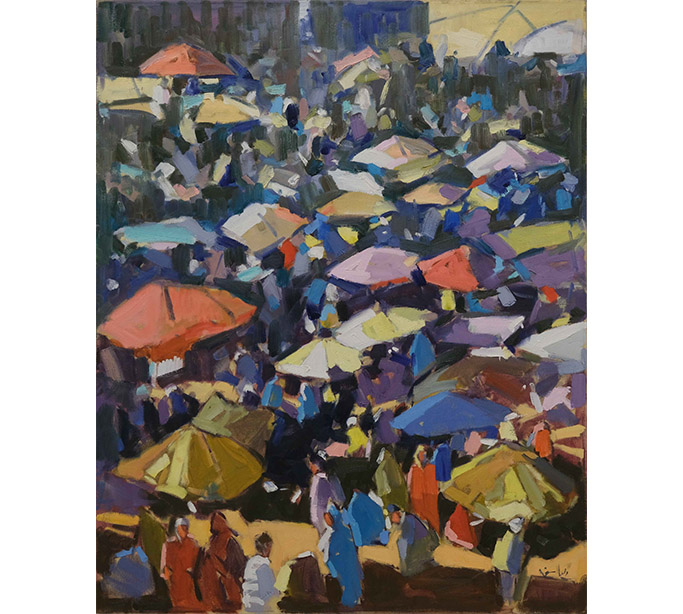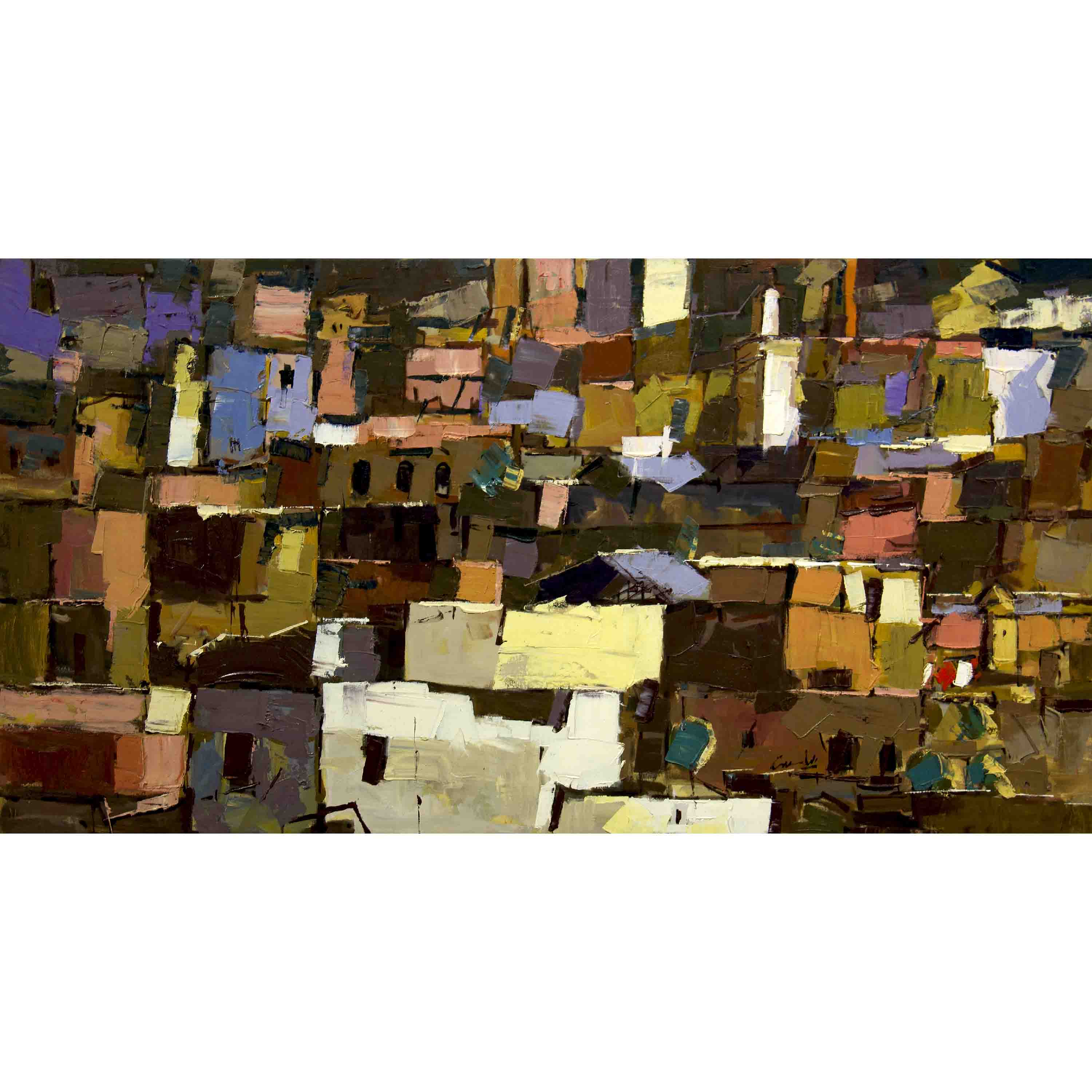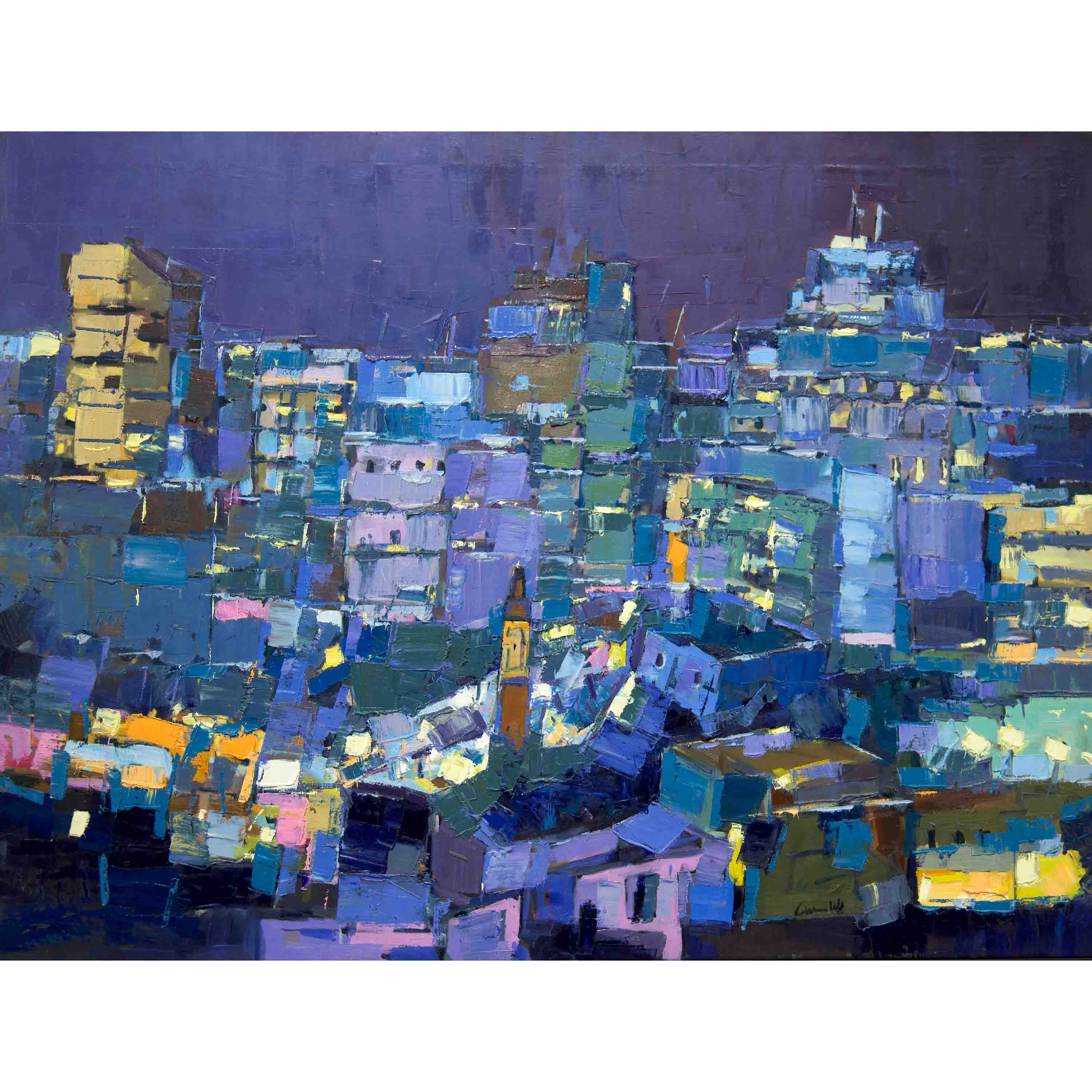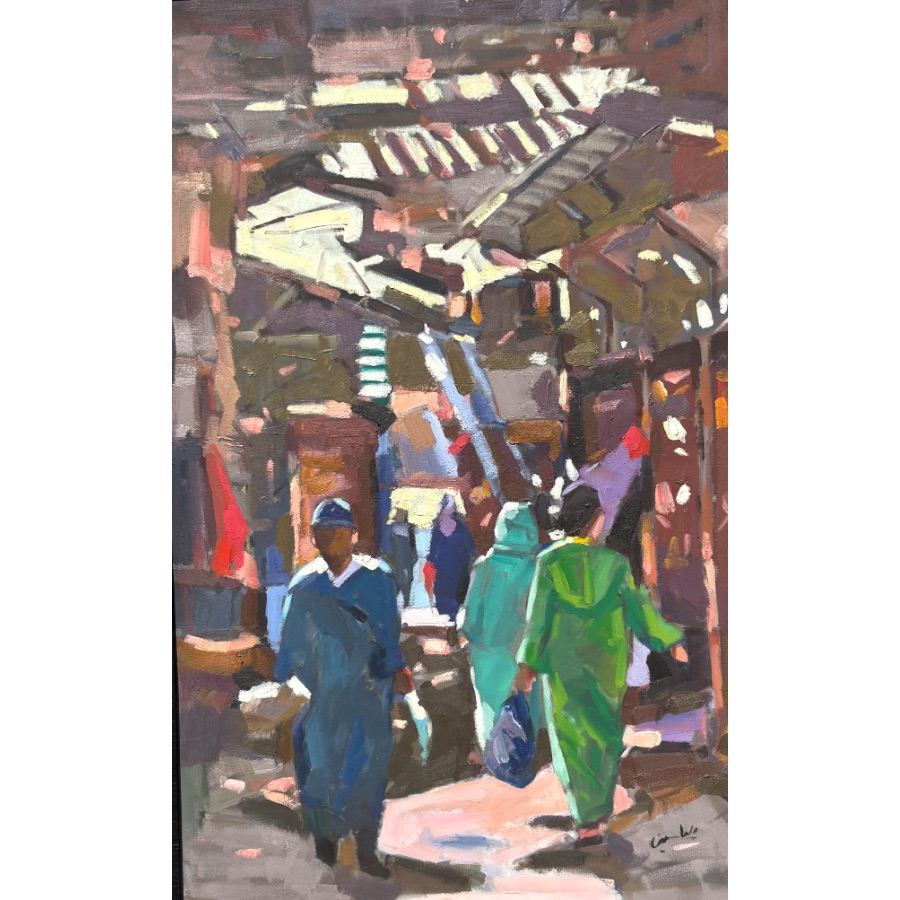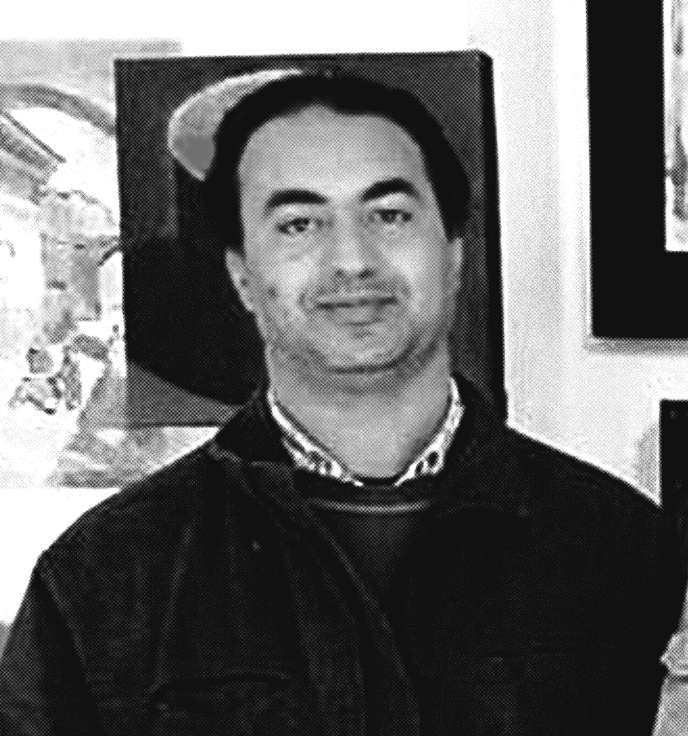
BELYASMINE ELMUSTAPHA
ELJADIDA
Graduated from the National Fine Arts School of Tetuan, Mustapha Belyasmine is one of the most talented artists among its generation. His astonishing paintings offers a radical fusion of traditional impressionist elements, neoexpressionism, and even realism, all mixed and transformed with his tremendous colorist geniality and art mastery His technique, absolutely personal, captures the movement in a way that, in his crowd scenes for example, does not content to paint a moment in time, but a sliding of time of one millisecond, seizing the movement of characters, light, shadow and the shimmer of warmth. Through his inert mediums that are his brushes, paintings and canvas, he doesn’t try to evoke a photographic immobility, but he search to represent the cinematic quality of what he had observed. In DOS DE FATIMAHS, a fauvist composition promptly executed, he doesn’t only seek the representation of caftan sheets of his subjects and the quality of tissues, but with rapid brushstrokes executed with parsimony on the hips, the back and the arms, it infuses a real sens of kinetic energy. It’s not about a sharply academic painting, a study of ethnic dresses bought in a bazar, executed by a mediocre orientalist and without any sens of reality; on contrary his canvas is impregnated by a real sens of scene, time, culture, and the quintessence of a Morrocanity in with we can’t escape. The capacity of Belyasmine of soaking his paintings of real sens of kinetic energy is very evident in his landscapes. In KOUBA DANS UN PAYSAGE PRINTANIER, the herbs wave under the wind and the clouds run in a turquoise sky. The direction of the movement is specific, from right to left; the scented winds of spring gently embrace the landscape, before the summer ones make it as dry as firewood. Once again, the artist shows his inborn talent to capture the time, the movement and a tremendous sense of place. Its a sensible artwork of an artist in pursuing a passionate adventure with Morocco, its fields and streets, its mountains and mosques, but mostly its soul, this distinctive character granted by God to the different nations, before globalization and multiculturalism corrupts it. In TABLE À LA LIMONADE, the artist combines both portraitist art and landscape art, without any domination of the two elements over each other; a synergy of differential brushstrokes, a moderated pallet and harmonious movement. Once again, there is a Moroccanity in this work, a passionate observation of real persons to a given moment. But the world is not static. The change, such as the death, is a result of the fall. The limonade bottles, the plastic cups and the tablecloth are warning signs of change, the inexorable pression towards the realization of modernity, this erroneous nirvana of commercialization. LUNCH, D’JEMAA EL FNA is an artwork that is as evocative as honest. it is essentially devoid from any iconographic landmark that screams : Marrakech ! The chiefs and servers, with their white caps and aprons, could work in any place in the world, in a McDonald in Beijing or a Roman trattoria; however there is something the rooftop slope, the cuboid form of buildings, the tinted rose-colored walls and the long tables on their trestles, that locate with an absolute manner this humble scene in Marrakesh, likewise the evident presence of the majestic minaret of Koutoubia !






